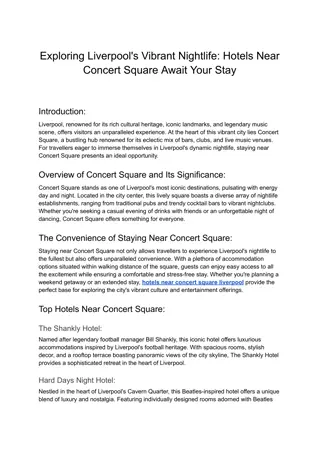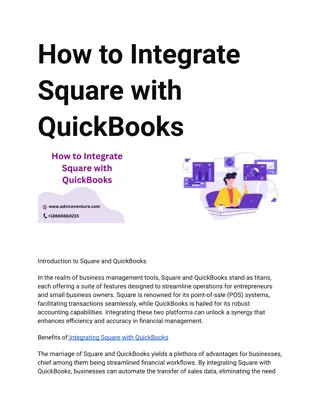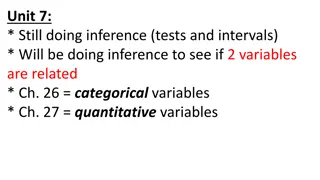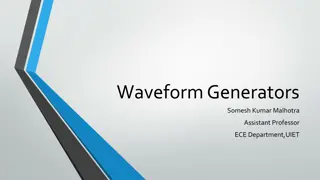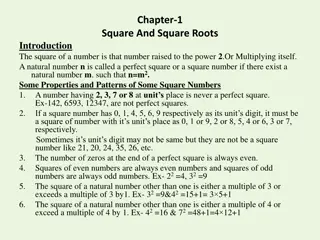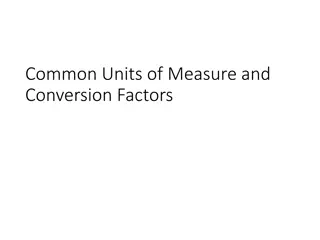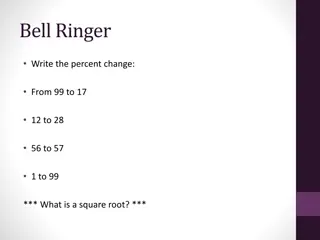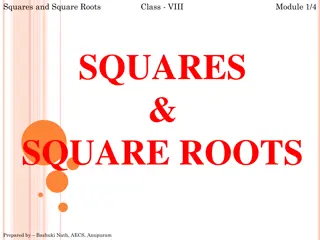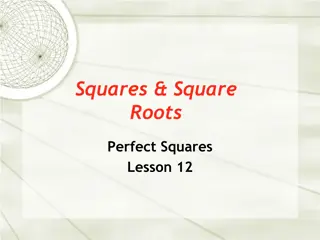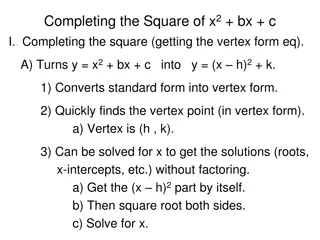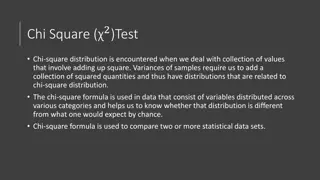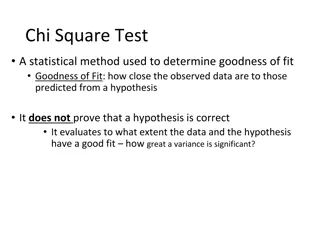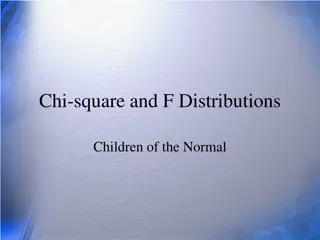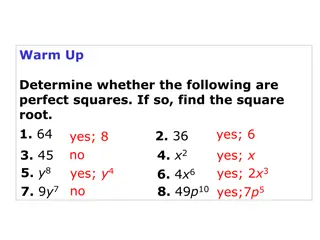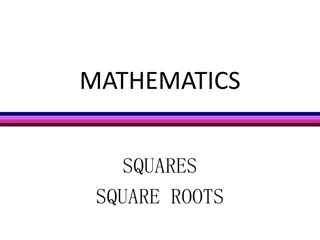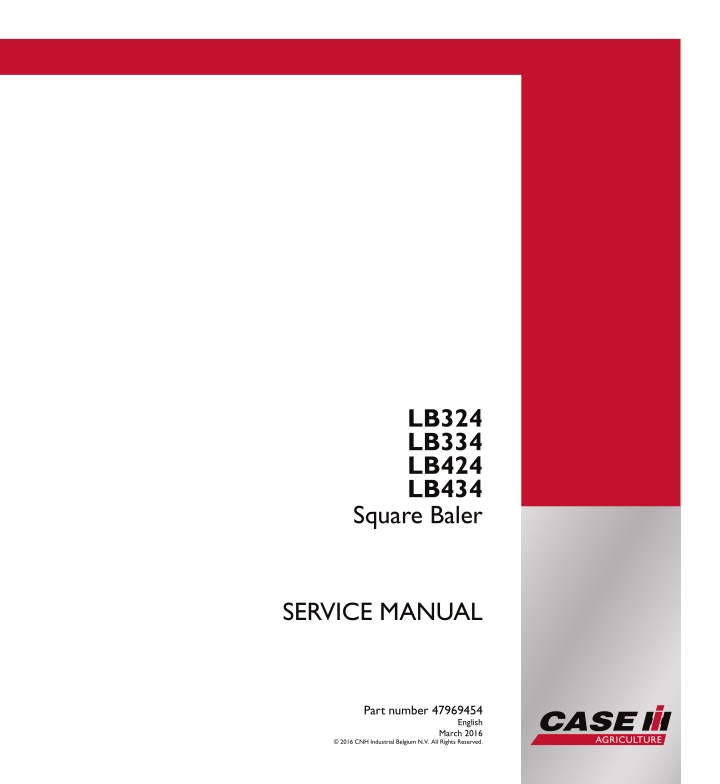
CASE IH LB324 Square Baler Service Repair Manual Instant Download (4137 and up)
CASE IH LB324 Square Baler Service Repair Manual Instant Download (4137 and up)
Download Presentation

Please find below an Image/Link to download the presentation.
The content on the website is provided AS IS for your information and personal use only. It may not be sold, licensed, or shared on other websites without obtaining consent from the author. If you encounter any issues during the download, it is possible that the publisher has removed the file from their server.
You are allowed to download the files provided on this website for personal or commercial use, subject to the condition that they are used lawfully. All files are the property of their respective owners.
The content on the website is provided AS IS for your information and personal use only. It may not be sold, licensed, or shared on other websites without obtaining consent from the author.
E N D
Presentation Transcript
SERVICE MANUAL LB324 LB334 LB424 LB434 LB324 LB334 LB424 LB434 Square Baler Square Baler Part number 47969454 1/2 SERVICE MANUAL Part number 47969454 English March 2016 2016 CNH Industrial Belgium N.V. All Rights Reserved.
SERVICE MANUAL LB324P Packer Cutter [4137 - ], LB324R Rotor Cutter [4137 - ], LB324S Standard [4137 - ], LB334P Packer Cutter [4137 - ], LB334R Rotor Cutter [4137 - ], LB334S Standard [4137 - ], LB424R Rotor Cutter [4137 - ], LB424S Standard [4137 - ], LB434R Rotor Cutter [4137 - ], LB434S Standard [4137 - ] 47969454 24/02/2016 EN
Contents INTRODUCTION Power Take-Off (PTO)................................................................. 31 [31.201] Power Take-Off (PTO) drive shaft.................................................. 31.1 [31.205] Flywheel............................................................................ 31.2 [31.220] Gearbox............................................................................ 31.3 [31.225] Clutches............................................................................ 31.4 Brakes and controls .................................................................... 33 [33.202] Hydraulic service brakes ........................................................... 33.1 [33.300] Pneumatic service brakes.......................................................... 33.2 Hydraulic systems....................................................................... 35 [35.540] Bale density circuit ................................................................. 35.1 [35.568] Knife positioning circuit............................................................. 35.2 [35.570] Bale eject circuit.................................................................... 35.3 [35.580] Rear bale chute positioning system................................................ 35.4 [35.585] Tandem auto-steer lock circuit ..................................................... 35.5 Electrical systems....................................................................... 55 [55.000] Electrical system ................................................................... 55.1 [55.100] Harnesses and connectors......................................................... 55.2 [55.629] Pressing/Bale formation electrical control.......................................... 55.3 [55.640] Electronic modules................................................................. 55.4 [55.633] Baler feeding control ............................................................... 55.5 [55.629] Pressing/Bale formation electrical control.......................................... 55.6 [55.433] Twine and net cutting and tying or wrapping....................................... 55.7 [55.408] Warning indicators, alarms, and instruments ...................................... 55.8 [55.DTC] FAULT CODES.................................................................... 55.9 Product feeding.......................................................................... 60 47969454 24/02/2016
https://www.ebooklibonline.com Hello dear friend! Thank you very much for reading. Enter the link into your browser. The full manual is available for immediate download. https://www.ebooklibonline.com
[60.220] Pickup.............................................................................. 60.1 [60.260] Rotor ............................................................................... 60.2 [60.230] Precompression.................................................................... 60.3 [60.240] Packer.............................................................................. 60.4 [60.280] Stuffer .............................................................................. 60.5 Pressing - Bale formation............................................................. 62 [62.100] Plunger and connecting rod........................................................ 62.1 Tying/Wrapping/Twisting.............................................................. 68 [68.160] Knotter frame....................................................................... 68.1 [68.100] Knotter drive system ............................................................... 68.2 [68.110] Knotter clutch and brake ........................................................... 68.3 [68.130] Needles ............................................................................ 68.4 [68.120] Knotter trip mechanism ............................................................ 68.5 [68.140] Knotter stack ....................................................................... 68.6 Ejection..................................................................................... 70 [70.250] Bale chute.......................................................................... 70.1 Lubrication system...................................................................... 71 [71.460] Grease lubrication system ......................................................... 71.1 [71.480] Oiler system........................................................................ 71.2 Platform, cab, bodywork, and decals............................................. 90 [90.105] Machine shields and guards ....................................................... 90.1 47969454 24/02/2016
INTRODUCTION 47969454 24/02/2016 1
Contents INTRODUCTION Foreword - Important notice regarding equipment servicing (*) ................................3 Safety rules .....................................................................................4 Safety rules (*) ..................................................................................7 Safety rules - Ecology and the environment ....................................................8 Torque ..........................................................................................9 Torque - Standard torque data for hydraulic connections ..................................... 11 Basic instructions - Chain Wear Tables - Roller Chains ...................................... 18 Basic instructions - How to use and navigate through this Manual ........................... 20 Basic instructions - Shop and assembly ...................................................... 27 Conversion factors ............................................................................ 29 Hydraulic contamination ...................................................................... 30 Product identification (*) ...................................................................... 31 Product identification (*) ...................................................................... 32 (*) See content for specific models 47969454 24/02/2016 2
INTRODUCTION Foreword - Important notice regarding equipment servicing LB324P Packer Cutter [4137 - ] LB324R Rotor Cutter [4137 - ] LB324S Standard [4137 - ] LB334P Packer Cutter [4137 - ] LB334R Rotor Cutter [4137 - ] LB334S Standard [4137 - ] LB424R Rotor Cutter [4137 - ] LB424S Standard [4137 - ] LB434R Rotor Cutter [4137 - ] LB434S Standard [4137 - ] Large LB series ANZ --- APAC --- LA --- MEA --- WE ANZ --- APAC --- LA --- MEA --- WE ANZ --- APAC --- LA --- MEA --- WE ANZ --- APAC --- LA --- MEA --- WE ANZ --- APAC --- LA --- MEA --- WE ANZ --- APAC --- LA --- MEA --- WE ANZ --- APAC --- LA --- MEA --- WE ANZ --- APAC --- LA --- MEA --- WE ANZ --- APAC --- LA --- MEA --- WE ANZ --- APAC --- LA --- MEA --- WE ANZ --- APAC --- LA --- MEA --- WE All repair and maintenance work listed in this manual must be carried out only by qualified dealership personnel, strictly complying with the instructions given, and using, whenever possible, the special tools. Anyone who performs repair and maintenance operations without complying with the procedures provided herein shall be responsible for any subsequent damages. The manufacturer and all the organizations of its distribution chain, including - without limitation - national, regional, or local dealers, reject any responsibility for damages caused by parts and/or components not approved by the manu- facturer, including those used for the servicing or repair of the product manufactured or marketed by the manufacturer. In any case, no warranty is given or attributed on the product manufactured or marketed by the manufacturer in case of damages caused by parts and/or components not approved by the manufacturer. The manufacturer reserves the right to make improvements in design and changes in specifications at any time without notice and without incurring any obligation to install them on units previously sold. Specifications, descriptions, and illustrative material herein are as accurate as known at time of publication but are subject to change without notice. In case of questions, refer to your CASE IH Sales and Service Networks. 47969454 24/02/2016 3
INTRODUCTION Safety rules LEGAL OBLIGATIONS This machine may be equipped with special guarding or other devices in compliance with local legislation. Some to these require active use by the operator. Therefor, check local legislations on the usage of this machine. ACCIDENT PREVENTION Most accidents or injuries that occur in workshops are the result of non compliance to simple and fundamental safety principles. For this reason, IN MOST CASES THESE ACCIDENTS CAN BE AVOIDED by applying the fundamental safety principles, acting with the necessary caution and care. Accidents may occur with all types of machine, regardless of how well the machine in question was designed and built. CAUTION Unexpected machine movement! 1. Disengage all drives. 2. Engage parking brake. 3. Lower all attachments to the ground, or raise and engage all safety locks. 4. Shut off engine. 5. Remove key from key switch. 6. Switch off battery key, if installed. 7. Wait for all machine movement to stop. Failure to comply could result in minor or moderate injury. C0038A SAFETY REQUIREMENTS FOR FLUID POWER SYSTEMS AND COMPONENTS - HY- DRAULICS (EUROPEAN STANDARD EN982) Flexible hose assemblies must not be constructed from hoses which have been previously used as part of a hose assembly. Do not weld hydraulic pipes: when flexible hoses or piping are damaged, replace them immediately. It is forbidden to modify a hydraulic accumulator by machining, welding or any other way. Before removing hydraulic accumulators for servicing, the liquid pressure in the accumulators must be reduced to zero. Pressure check on hydraulic accumulators must be carried out by a method recommended by the accumulator manufacturer. Take care not to exceed the maximum allowed pressure of the accumulator. After any check or adjustment, check for leakages or gas in the hoses or tubes. SAFETY RULES General guidelines Carefully follow specified repair and maintenance procedures. When appropriate, use P.P.E (Personal Protective Equipment) Do not wear rings, wristwatches, jewellery, unbuttoned or loose articles of clothing such as: ties, torn clothing, scarves, open jackets or shirts with open zips that may remain entangled in moving parts. It is advised to wear approved safety clothing, e.g.: non-slip footwear, gloves, safety goggles, helmets, etc. Do not carry out repair operations with someone sitting in the driver's seat, unless the person is a trained technician who is assisting with the operation in question. Do not operate the machine or use any of the implements from different positions, other than the driver's seat. Do not carry out operations on the machine with the engine running, unless specifically indicated. 47969454 24/02/2016 4
INTRODUCTION Bring all hydraulic cylinders to the home positions (down, retracted, etc.) before engine shut down. Stop the engine and check that the hydraulic circuits are pressure-free before removing caps, covers, valves, etc. All repair and maintenance operations must be carried out using extreme care and attention. Service steps and platforms used in the workshop or elsewhere should be built according to the applicable stan- dards and legislation. Disconnect the Power Take-Off (PTO) and label the controls to indicate that the machine is being serviced. Brakes are inoperative when manually released for repair or maintenance purposes. Use blocks or similar devices to secure the machine in these conditions. Only use specified towing points for towing the machine. Connect parts carefully. Make sure that all pins and/or locks are secured in position before applying traction. Never remain near the towing bars, cables or chains that are operating under load. When loading or unloading the machine from the trailer (or other means of transport), select a flat area capable of sustaining the trailer or truck wheels. Firmly secure the machine to the truck or trailer and lock the wheels in the position used by the carrier. Electric heaters, battery-chargers and similar equipment must only be powered by auxiliary power supplies with efficient ground insulation to avoid electrical shock hazards. Always use suitable hoisting or lifting devices when raising or moving heavy parts. Keep bystanders away. Never use gasoline, diesel oil or other inflammable liquids as cleaning agents. Use non-inflammable, non toxic commercially available solvents. Wear safety goggles with side guards when cleaning parts with compressed air. Never use open flames for lighting when working on the machine or checking for leaks. When carrying out checks with the engine running, request the assistance of an operator in the driver's seat. The operator must maintain visual contact with the service technician at all times. If operating outside the workshop, position the machine on a flat surface and lock in position. If working on a slope, lock the machine in position. Move to a flat area as soon as is safely possible. Maintenance and repair operations must be carried out in a clean and dry area. Clean up any water or oil spillage immediately. Do not create piles of oil or grease-soaked rags as they represent a serious fire hazard. Always store rags in a closed metal container. Before engaging the machine, make sure that there are no persons within the machine or implement range of action. Empty your pockets of all objects that may fall accidentally unobserved into the machine inner compartments. When metal parts are sticking out, use protective goggles or goggles with side guards, helmets, special footwear and gloves. When welding, use protective safety devices: tinted safety goggles, helmets, special overalls, gloves and footwear. All persons present in the area where welding is taking place must wear tinted goggles. NEVER LOOK DIRECTLY AT THE WELDING ARC WITHOUT SUITABLE EYE PROTECTION. 47969454 24/02/2016 5
INTRODUCTION Machine start-up. Never run the engine in confined spaces that are not equipped with adequate ventilation for exhaust gas extraction. Never place the head, body, limbs, feet, hands or fingers near rotating and moving parts. Hydraulic systems and fuel injection systems A liquid leaking from a tiny hole may be almost invisible but, at the same time, be powerful enough to penetrate the skin. Therefore, NEVER USE HANDS TO CHECK FOR LEAKS but use a piece of cardboard or paper for this purpose. If any liquid penetrates skin tissue, call for medical aid immediately. Failure to treat this condition with correct medical procedure may result in serious infection or death. In order to check the pressure in the system use suitable instruments. Wheels and tires Make sure that the tires are correctly inflated at the pressure specified by the manufacturer. Periodically check the rims and tires for damage. Stand away from (at the side of) the tire when checking inflation pressure. Do not use parts of recovered wheels as incorrect welding brazing or heating may weaken and eventually cause damage to the wheel. Never cut or weld a rim mounted with an inflated tire. Deflate the tire before removing any objects that may be jammed in the tire tread. Never inflate tires using inflammable gases, as this may result in explosions and injury to bystanders. Removal and installation Lift and handle all heavy parts using suitable hoisting equipment. Make sure that parts are sustained by appropriate hooks and slings. Use the hoisting eyebolts for lifting operations. Extra care should be taken if persons are present near the load to be lifted. Handle all parts carefully. Do not put your hands or fingers between parts. Wear suitable safety clothing - safety goggles, gloves and shoes. Avoid twisting chains or metal cables. Always wear safety gloves when handling cables or chains. Damaged or bent chains or cables are unreliable. Do not use them for lifting or towing. Always use suitable pro- tective gloves when handling chains or cables. Chains should always be safely secured. Make sure that the hitch-up point is capable of sustaining the load in question. Keep the area near the hitch-up point, chains or cables free of all bystanders. Metal cables tend to fray with repeated use. Always use suitable protective devices (gloves, goggles, etc.) when handling cables. 47969454 24/02/2016 6
INTRODUCTION Safety rules LB324P Packer Cutter [4137 - ] LB324R Rotor Cutter [4137 - ] LB324S Standard [4137 - ] LB334P Packer Cutter [4137 - ] LB334R Rotor Cutter [4137 - ] LB334S Standard [4137 - ] LB424R Rotor Cutter [4137 - ] LB424S Standard [4137 - ] LB434R Rotor Cutter [4137 - ] LB434S Standard [4137 - ] Large LB series ANZ --- APAC --- LA --- MEA --- WE ANZ --- APAC --- LA --- MEA --- WE ANZ --- APAC --- LA --- MEA --- WE ANZ --- APAC --- LA --- MEA --- WE ANZ --- APAC --- LA --- MEA --- WE ANZ --- APAC --- LA --- MEA --- WE ANZ --- APAC --- LA --- MEA --- WE ANZ --- APAC --- LA --- MEA --- WE ANZ --- APAC --- LA --- MEA --- WE ANZ --- APAC --- LA --- MEA --- WE ANZ --- APAC --- LA --- MEA --- WE Personal safety This is the safety alert symbol. It is used to alert you to potential personal injury hazards. Obey all safety messages that follow this symbol to avoid possible death or injury. Throughout this manual you will find the signal words DANGER, WARNING, and CAUTION followed by special in- structions. These precautions are intended for the personal safety of you and those working with you. Read and understand all the safety messages in this manual before you operate or service the machine. DANGER indicates a hazardous situation that, if not avoided, will result in death or serious injury. WARNING indicates a hazardous situation that, if not avoided, could result in death or serious injury. CAUTION indicates a hazardous situation that, if not avoided, could result in minor or moderate injury. FAILURE TO FOLLOW DANGER, WARNING, AND CAUTION MESSAGES COULD RESULT IN DEATH OR SERIOUS INJURY. Machine safety NOTICE: Notice indicates a situation that, if not avoided, could result in machine or property damage. Throughout this manual you will find the signal word Notice followed by special instructions to prevent machine or property damage. The word Notice is used to address practices not related to personal safety. Information NOTE: Note indicates additional information that clarifies steps, procedures, or other information in this manual. Throughout this manual you will find the word Note followed by additional information about a step, procedure, or other information in the manual. The word Note is not intended to address personal safety or property damage. 47969454 24/02/2016 7
INTRODUCTION Safety rules - Ecology and the environment Soil, air, and water quality is important for all industries and life in general. When legislation does not yet rule the treatment of some of the substances that advanced technology requires, sound judgment should govern the use and disposal of products of a chemical and petrochemical nature. Familiarize yourself with the relative legislation applicable to your country, and make sure that you understand this legislation. Where no legislation exists, obtain information from suppliers of oils, filters, batteries, fuels, anti-freeze, cleaning agents, etc., with regard to the effect of these substances on man and nature and how to safely store, use, and dispose of these substances. Helpful hints Avoid the use of cans or other inappropriate pressurized fuel delivery systems to fill tanks. Such delivery systems may cause considerable spillage. In general, avoid skin contact with all fuels, oils, acids, solvents, etc. Most of these products contain substances that may be harmful to your health. Modern oils contain additives. Do not burn contaminated fuels and or waste oils in ordinary heating systems. Avoid spillage when you drain fluids such as used engine coolant mixtures, engine oil, hydraulic fluid, brake fluid, etc. Do not mix drained brake fluids or fuels with lubricants. Store all drained fluids safely until you can dispose of the fluids in a proper way that complies with all local legislation and available resources. Do not allow coolant mixtures to get into the soil. Collect and dispose of coolant mixtures properly. The air-conditioning system contains gases that should not be released into the atmosphere. Consult an air-condi- tioning specialist or use a special extractor to recharge the system properly. Repair any leaks or defects in the engine cooling system or hydraulic system immediately. Do not increase the pressure in a pressurized circuit as this may lead to a component failure. Protect hoses during welding. Penetrating weld splatter may burn a hole or weaken hoses, allowing the loss of oils, coolant, etc. Battery recycling Batteries and electric accumulators contain several substances that can have a harmful effect on the environment if the batteries are not properly recycled after use. Improper disposal of batteries can contaminate the soil, groundwater, and waterways. CASE IH strongly recommends that you return all used batteries to a CASE IH dealer, who will dispose of the used batteries or recycle the used batteries properly. In some countries, this is a legal requirement. Mandatory battery recycling NOTE: The following requirements are mandatory in Brazil. Batteries are made of lead plates and a sulfuric acid solution. Because batteries contain heavy metals such as lead, CONAMA Resolution 401/2008 requires you to return all used batteries to the battery dealer when you replace any batteries. Do not dispose of batteries in your household garbage. Points of sale are obliged to: Accept the return of your used batteries Store the returned batteries in a suitable location Send the returned batteries to the battery manufacturer for recycling 47969454 24/02/2016 8
INTRODUCTION Torque Minimum hardware tightening torques (in N m or lb in /lb ft) for normal assembly applica- tions unless otherwise stated NOTICE: Shown below is the suggested initial torque tightening sequences for general applications, tighten in se- quence from item 1 through to the last item of the hardware. The minimum hardware tightening torque on drawings, in specifications etc. have priority. The applicable CNH Standard is ENS7001. 1 DF5019-1 Metric hardware Class 8.8 in N m (lb in or lb ft) Plated nut Lock nut Class 10.9 in N m (lb in or lb ft) Plated nut Lock nut Nominal Size M3 Hardened nut Hardened nut 1.3 N m (11.5 lb in) 2.9 N m (25.7 lb in) 5.9 N m (52.2 lb in) 10.1 N m (89.4 lb in) 24.5 N m (18.1 lb ft) 48.7 N m (35.9 lb ft) 85 N m (62.7 lb ft) 135 N m (99.6 lb ft) 210 N m (154.9 lb ft) 299 N m (220.5 lb ft) 425 N m (313.5 lb ft) 579 N m (427 lb ft) 735 N m (542.1 lb ft) 1073 N m (791.4 lb ft) 1461 N m (1077.6 lb ft) 0.7 N m (6.2 lb in) 1.6 N m (14.2 lb in) 3.2 N m (28.3 lb in) 5.5 N m (48.7 lb in) 13.5 N m (10.0 lb ft) 26.8 N m (19.8 lb ft) 46.7 N m (34.4 lb ft) 74.2 N m (54.7 lb ft) 115.5 N m (85.2 lb ft) 164.4 N m (121.3 lb ft) 233.72 N m (172.4 lb ft) 318.4 N m (234.8 lb ft) 404.2 N m (298.1 lb ft) 590.1 N m (435.2 lb ft) 803.5 N m (592.6 lb ft) 1.2 N m (10.6 lb in) 2.6 N m (23.0 lb in) 5.3 N m (46.9 lb in) 9.1 N m (80.5 lb in) 22 N m (16.2 lb ft) 43.8 N m (32.3 lb ft) 76.5 N m (56.4 lb ft) 121.5 N m (89.6 lb ft) 189 N m (139.4 lb ft) 269.1 N m (198.5 lb ft) 382.5 N m (282.1 lb ft) 521.1 N m (384.3 lb ft) 661.5 N m (487.9 lb ft) 967.5 N m (713.6 lb ft) 1315 N m (969.9 lb ft) 1.8 N m (15.9 lb in) 4.2 N m (37.2 lb in) 8.5 N m (75.2 lb in) 14.5 N m (10.7 lb ft) 35.1 N m (25.9 lb ft) 69.5 N m (51.3 lb ft) 121 N m (89.2 lb ft) 193 N m (142.3 lb ft) 301 N m (222 lb ft) 414 N m (305.4 lb ft) 587 N m (432.9 lb ft) 801 N m (590.8 lb ft) 1016 N m (749.4 lb ft) 1486 N m (1096 lb ft) 2020 N m (1489.9 lb ft) 0.9 N m (8.0 lb in) 2.3 N m (20.4 lb in) 4.6 N m (40.7 lb in) 7.9 N m (69.9 lb in) 19.3 N m (14.2 lb ft) 38.2 N m (28.2 lb ft) 66.5 N m (49.0 lb ft) 106.1 N m (78.3 lb ft) 165.5 N m (122.1 lb ft) 227.7 N m (167.9 lb ft) 322.8 N m (238.1 lb ft) 440.5 N m (324.9 lb ft) 558.8 N m (412.1 lb ft) 817.3 N m (602.8 lb ft) 1111 N m (819.4 lb ft) 1.6 N m (14.2 lb in) 3.7 N m (32.7 lb in) 7.6 N m (67.3 lb in) 13 N m (9.6 lb ft) 31.5 N m (23.2 lb ft) 62.5 N m (46.1 lb ft) 108.9 N m (80.3 lb ft) 173.7 N m (128.1 lb ft) 270.9 N m (199.8 lb ft) 372.6 N m (274.8 lb ft) 528.3 N m (389.7 lb ft) 720.9 N m (531.7 lb ft) 914.4 N m (674.4 lb ft) 1337 N m (986.1 lb ft) 1818 N m (1340.9 lb ft) M4 M5 M6 M8 M10 M12 M14 M16 M18 M20 M22 M24 M27 M30 47969454 24/02/2016 9
INTRODUCTION 2 ZEIL06CS0136F0A 3 ZEIL06CS0135F0A 47969454 24/02/2016 10
INTRODUCTION Torque - Standard torque data for hydraulic connections General information Hydraulic connections require a minimum assembly torque in order to provide zero leakage at rated pressure with adequate fatigue resistance. Over-torquing of a hydraulic connection can also lead to leakage or failure. For some connections, CASE IH requires a different torque value than is listed in the ISO and SAE standards. The torque values in this document should be used whenever possible or applicable. NOTICE: Always follow the instructions in this manual for specific torque values when you service components. The information in this section is for general guidance only when a procedure contains no specific torque value. Tolerance The tolerance for all torque values is 10 %. This tolerance must include all assembly variation, not only the torque wrench repeatability. Lubrication Application of grease or other lubricants to hydraulic connectors should be avoided. If clean hydraulic oil is already on the connection, it is not required to remove the oil. Generally, application of grease: May cause a significant change in the torque required to properly tighten the connection. May reduce the connection s resistance to vibration. Excessive grease may displace an elastomer seal during tightening. Grease extrusion when connection is tightened may be mistaken for leakage. CASE IH products generally use O-Ring Boss (ORB) connectors that have Teflon -coated O-rings, eliminating the need for O-ring lubrication during installation. For connections which are made into aluminum manifolds or with stain- less steel connectors, it may be required to apply a lubricant to prevent galling. Use of LOCTITE and other thread-locking compounds is prohibited. These compounds: May cause a significant change in the torque required to properly tighten the connections. Reduce the serviceability of the joint. May prevent the O-ring from properly sealing if the compound gets on the O-ring. 47969454 24/02/2016 11
INTRODUCTION Torque values for metric O-Ring Boss (ORB) port connections S-Series * Metric thread N m (lb ft) 10 % M8 x 1 10.5 (7.7) M10 x 1 21 (15.5) M12 x 1.5 37 (27.3) M14 x 1.5 47 (34.7) M16 x 1.5 58 (42.8) M18 x 1.5 74 (54.6) M22 x 1.5 105 (77.4) M27 x 2 178 (131.3) M30 x 2 225 (166) M33 x 2 325 (239.7) M42 x 2 345 (254.5) M48 x 2 440 (324.5) M60 x 2 525 (387.2) L-Series ** Ferrous Non-Ferrous N m (lb ft) 10 % 6.3 (4.6) 12.5 (9.2) 22 (16.2) 28 (20.7) 35 (25.8) 44 (32.5) 63 (46.5) 107 (78.9) 135 (99.6) 195 (143.8) 207 (152.7) 264 (194.7) 315 (232.3) Ferrous Non-Ferrous N m (lb ft) 10 % 5 (3.7) 9.3 (6.9) 16 (11.8) 22 (16.2) 25 (18.4) 28 (20.7) 38 (28) 63 (46.5) 82 (60.5) 101 (74.5) 132 (97.4) 164 (121) 198 (146) N m (lb ft) 10 % 8.5 (6.3) 15.5 (11.4) 27 (19.9) 37 (27.3) 42 (31) 47 (34.7) 63 (46.5) 105 (77.4) 136 (100.3) 168 (123.9) 220 (162.3) 273 (201.4) 330 (243.4) * S-Series connectors are used with O-Ring Face Seals (ORFS). ** L-Series connectors are used with 37 flare. Torque values for metric O-Ring Boss (ORB) port plugs Ferrous Non-ferrous Metric thread M8 x 1 M10 x 1 M12 x 1.5 M14 x 1.5 M16 x 1.5 M18 x 1.5 M22 x 1.5 M27 x 2 M30 x 2 M33 x 2 M42 x 2 M48 x 2 M60 x 2 Internal hex N m (lb ft) 10 % 8.5 (6.3) 16 (11.8) 23 (17) 47 (34.7) 58 (42.8) 74 (54.6) 105 (77.4) 178 (131.3) 225 (166) 325 (239.7) 345 (254.5) 440 (324.5) 525 (387.2) External hex N m (lb ft) 10 % 10.5 (7.7) 21 (15.5) 37 (27.3) 47 (34.7) 58 (42.8) 74 (54.6) 105 (77.4) 178 (131.3) 225 (166) 325 (239.7) 345 (254.5) 440 (324.5) 525 (387.2) N m (lb ft) 10 % 6.3 (4.6) 12.5 (9.2) 22 (16.2) 28 (20.7) 35 (25.8) 44 (32.5) 63 (46.5) 107 (78.9) 135 (99.6) 195 (143.8) 207 (152.7) 264 (194.7) 315 (232.3) 47969454 24/02/2016 12
INTRODUCTION Torque values for port connections (British Standard Pipe Parallel (BSPP) thread ports and stud ends) Metric tube Outside Diameter (OD) mm (in) BSPP thread G- Gas; A- medium coarse threads G 1/8 A 6 (0.236) 6 (0.236) or 8 (0.315) 10 (0.394) 10 (0.394) or 12 (0.472) 15 (0.591) or 18 (0.709) G 3/4 A 20 (0.787) 22 (0.866) 210 (154.9) G 1 A 25 (0.984) 28 (1.102) 400 (295) G 1 1/4 A 30 (1.181) 35 (1.378) 525 (387.2) G 1 1/2 A 38 (1.496) 42 (1.654) 660 (486.8) Ferrous Non-Ferrous S-Series N m (lb ft) 10 % L-Series N m (lb ft) 10 % S-Series N m (lb ft) 10 % L-Series N m (lb ft) 10 % S-Series * L-Series ** 21 (15.5) 12.5 (9.2) 8 (0.315) or 63 (46.5) 53 (39.1) 38 (28) 32 (23.6) G 1/4 A 12 (0.472) 95 (70.1) 84 (62) 57 (42) 50 (36.9) G 3/8 A 16 (0.630) 136 (100.3) 105 (77.4) 82 (60.5) 63 (46.5) G 1/2 A 210 (154.9) 400 (295) 525 (387.2) 660 (486.8) 126 (92.9) 240 (177) 315 (232.3) 396 (292.1) 126 (92.9) 240 (177) 315 (232.3) 396 (292.1) * S-Series connectors are used with O-Ring Face Seals (ORFS). ** L-Series connectors are used with 37 flare. Torque values for metric port connections (Metric face-seal ports and stud ends) Metric tube Outside Diameter (OD) mm (in) Ferrous Non-Ferrous S-Series N m (lb ft) 10 % 47 (34.7) 63 (46.5) 84 (62) 105 (77.4) 147 (108.4) 158 (116.5) 210 (154.9) 400 (295) 525 (387.2) 630 (464.7) L-Series N m (lb ft) 10 % 21 (15.5) 32 (23.6) 53 (39.1) 63 (46.5) 84 (62) 147 (108.4) 210 (154.9) S-Series N m (lb ft) 10 % 28 (20.7) 38 (28) 50 (36.9) 63 (46.5) 88 (64.9) 95 (70.1) 126 (92.9) 240 (177) 315 (232.3) 396 (292.1) L-Series N m (lb ft) 10 % 12.5 (9.2) 19 (14) 32 (23.6) 38 (28) 50 (36.9) 88 (64.9) 126 (92.9) 240 (177) 315 (232.3) 396 (292.1) Metric thread S-Series * L-Series ** M10 x 1 M12 x 1.5 M14 x 1.5 M16 x 1.5 M18 x 1.5 M20 x 1.5 M22 x 1.5 M26 x 1.5 M27 x 1.2 M33 x 2 M42 x 2 M48 x 2 4 (0.157) 6 (0.236) 7 (0.276) 9 (0.354) 11 (0.433) 14 (0.551) 18 (0.709) 23 (0.906) 30 (1.181) 36 (1.417) 4 (0.157) 5 (0.197) 7 (0.276) 8 (0.315) 10 (0.394) 12 (0.472) 16 (0.630) 20 (0.787) 25 (0.984) 32 (1.260) 400 (295) 525 (387.2) 630 (464.7) * S-Series connectors are used with O-Ring Face Seals (ORFS). ** L-Series connectors are used with 37 flare. 47969454 24/02/2016 13
INTRODUCTION Torque values for Inch O-Ring Boss (ORB) port non-adjustable connections S-Series * L-Series ** Ferrous N m (lb ft) 10 % Ferrous N m (lb ft) 10 % Non- Ferrous N m (lb ft) 10 % 9.3 (6.9) 22 (16.2) 25 (18.4) 28 (20.7) 53 (39.1) 73 (53.8) 107 (78.9) 135 (99.6) 170 (125.4) 180 (132.8) 233 (171.9) 233 (171.9) Non- Ferrous N m (lb ft) 10 % 5 (3.7) 6.3 (4.6) 11.5 (8.5) 15.5 (11.4) 19 (14) 32 (23.6) 38 (28) 60 (44.3) 79 (58.3) 94 (69.3) 126 (92.9) 132 (97.4) 189 (139.4) Inch tube OD mm (in) SAE UN/UNF thread size dash size 2 3 4 5 6 8 10 12 14 16 20 24 32 5/16-24 3/8-24 7/16-20 1/2-20 9/16-18 3/4-16 7/8-14 1-1/16-12 1-3/16-12 1-5/16-12 1-5/8-12 1-7/8-12 2-1/2-12 3.18 (0.125) 4.76 (0.187) 6.35 (0.250) 7.94 (0.313) 9.52 (0.375) 12.7 (0.500) 15.88 (0.625) 19.05 (0.750) 22.22 (0.875) 25.4 (1.000) 31.75 (1.250) 38.1 (1.500) 50.8 (2.000) 8.5 (6.3) 10.5 (7.7) 19 (14) 26 (19.2) 32 (23.6) 53 (39.1) 63 (46.5) 100 (73.8) 131 (96.6) 156 (115.1) 210 (154.9) 220 (162.3) 315 (232.3) 15.5 (11.4) 37 (27.3) 42 (31) 47 (34.7) 89 (65.6) 121 (89.2) 178 (131.3) 225 (166) 283 (208.7) 300 (221.3) 388 (286.2) 388 (286.2) * S-Series connectors are used with O-Ring Face Seals (ORFS). ** L-Series connectors are used with 37 flare. Torque values for inch O-Ring Boss (ORB) port adjustable connections S-Series * L-Series ** Ferrous N m (lb ft) 10 % Ferrous N m (lb ft) 10 % Non- Ferrous N m (lb ft) 10 % 9.3 (6.9) 21 (15.5) 25 (18.4) 28 (20.7) 53 (39.1) 73 (53.8) 107 (78.9) 135 (99.6) 170 (125.4) 180 (132.8) 233 (171.9) 233 (171.9) Non- Ferrous N m (lb ft) 10 % 5 (3.7) 6.3 (4.6) 11.5 (8.5) 15.5 (11.4) 19 (14) 32 (23.6) 38 (28) 60 (44.3) 79 (58.3) 94 (69.3) 126 (92.9) 132 (97.4) 189 (139.4) Inch tube OD mm (in) SAE UN/UNF thread size dash size 2 3 4 5 6 8 10 12 14 16 20 24 32 5/16-24 3/8-24 7/16-20 1/2-20 9/16-18 3/4-16 7/8-14 1-1/16-12 1-3/16-12 1-5/16-12 1-5/8-12 1-7/8-12 2-1/2-12 3.18 (0.125) 4.76 (0.187) 6.35 (0.250) 7.94 (0.313) 9.52 (0.375) 12.7 (0.500) 15.88 (0.625) 19.05 (0.750) 22.22 (0.875) 25.4 (1.000) 31.75 (1.250) 38.1 (1.500) 50.8 (2.000) 8.5 (6.3) 10.5 (7.7) 19 (14) 26 (19.2) 32 (23.6) 53 (39.1) 63 (46.5) 100 (73.8) 131 (96.6) 156 (115.1) 210 (154.9) 220 (162.3) 315 (232.3) 10.5 (7.7) 21 (15.5) 42 (31) 47 (34.7) 89 (65.6) 121 (89.2) 178 (131.3) 225 (166) 285 (210.2) 300 (221.3) 388 (286.2) 388 (286.2) * S-Series connectors are used with O-Ring Face Seals (ORFS). ** L-Series connectors are used with 37 flare. 47969454 24/02/2016 14
INTRODUCTION Torque values for inch O-Ring Boss (ORB) port plugs Ferrous Non-Ferrous Internal hex N m (lb ft) 10 % 7.5 (5.5) 14.5 (10.7) 21 (15.5) 28 (20.7) 47 (34.7) 89 (65.6) 116 (85.6) 176 (129.8) 247 (182.2) 284 (209.5) 357 (263.3) 441 (325.3) 536 (395.3) External hex N m (lb ft) 10 % 12.5 (9.2) 21 (15.5) 37 (27.3) 42 (31) 47 (34.7) 89 (65.6) 116 (85.6) 176 (129.8) 247 (182.2) 284 (209.5) 357 (263.3) 441 (325.3) 536 (395.3) SAE UN/UNF thread size N m (lb ft) 10 % dash size 2 3 4 5 6 8 10 12 14 16 20 24 32 5/16-24 3/8-24 7/16-20 1/2-20 9/16-18 3/4-16 7/8-14 1-1/16-12 1-3/16-12 1-5/16-12 1-5/8-12 1-7/8-12 2-1/2-12 7.5 (5.5) 12.5 (9.2) 22 (16.2) 25 (18.4) 28 (20.7) 53 (39.1) 70 (51.6) 106 (78.2) 148 (109.2) 170 (125.4) 214 (157.8) 265 (195.5) 322 (237.5) Torque values for four-bolt flange connections (Metric Screws, Class 10.9) Code 61 N m (lb ft) 10 % 34 (25.1) 74 (54.6) 74 (54.6) Code 62 N m (lb ft) 10 % 34 (25.1) 74 (54.6) 137 (101) 137 (101) 189 (139.4) 310 (228.6) 575 (424.1) 575 (424.1) 680 (501.5) Metric size mm Imperial size in Screw code 61 Screw code 62 13 19 25 M8 x 1.25 M10 x 1.5 M10 x 1.5 M8 x 1.25 M10 x 1.5 M12 x 1.75 M12 x 1.75 M14 x 1.5 M16 x 2 M20 x 2.5 M24 x 3 M30 x 3.5 1/2 3/4 1 74 (54.6) 32 M10 x 1.5 1-1/4 38 51 64 76 89 102 127 M12 x 1.75 M12 x 1.75 M12 x 1.75 M16 x 2 M16 x 2 M16 x 2 M16 x 2 1-1/2 2 2-1/2 3 3-1/2 4 5 137 (101) 137 (101) 137 (101) 310 (228.6) 310 (228.6) 310 (228.6) 310 (228.6) Torque values for four-bolt flange connections (Metric Screws, Class 8.8) Code 61 N m (lb ft) 10 % 29 (21.4) 57(42) 57(42) Code 62 N m (lb ft) 10 % 29 (21.4) 57(42) 100 (73.8) 100 (73.8) 160 (118) 250 (184.4) 500 (368.8) 575 (424.1) 680 (501.5) Metric size mm Imperial size in Screw code 61 Screw code 62 13 19 25 M8 x 1.25 M10 x 1.5 M10 x 1.5 M8 x 1.25 M10 x 1.5 M12 x 1.75 M12 x 1.75 M14 x 1.5 M16 x 2 M20 x 2.5 M24 x 3 M30 x 3.5 1/2 3/4 1 57(42) 32 M10 x 1.5 1-1/4 38 51 64 76 89 102 127 M12 x 1.75 M12 x 1.75 M12 x 1.75 M16 x 2 M16 x 2 M16 x 2 M16 x 2 1-1/2 2 2-1/2 3 3-1/2 4 5 100 (73.8) 100 (73.8) 100 (73.8) 250 (184.4) 250 (184.4) 250 (184.4) 250 (184.4) 47969454 24/02/2016 15
INTRODUCTION Torque values for four-bolt flange connections (Inch Screws, Grade 8) Code 61 N m (lb ft) 10 % 34 (25.1) 63 (46.5) 63 (46.5) 97 (71.5) 158 (116.5) 158 (116.5) 158 (116.5) 310 (228.6) 310 (228.6) 310 (228.6) 310 (228.6) Code 62 N m (lb ft) 10 % 34 (25.1) 63 (46.5) 97 (71.5) 158 (116.5) 310 (228.6) 473 (348.9) Metric size mm Imperial size in Screw code 61 Screw code 62 13 19 25 32 38 51 64 76 89 102 127 1/2 3/4 1 1-1/4 1-1/2 2 2-1/2 3 3-1/2 4 5 5/16-18 3/8-16 3/8-16 7/16-14 1/2-13 1/2-13 1/2-13 5/8-11 5/8-11 5/8-11 5/8-11 5/16-18 3/8-16 7/16-14 1/2-13 5/8-11 3/4-10 Tapered thread connection tightening British Standard Pipe Taper (BSPT) thread size (inch) 1/8-28 1/4-19 3/8-19 1/2-14 3/4-14 1-11 1-1/4-11 1-1/2-11 2-11 National Pipe Thread Fuel (NPTF) thread size (inch) 1/8-27 1/4-18 3/8-18 1/2-14 3/4-14 1-11 1/2 1-1/4-11 1/2 1-1/2-11 1/2 2-11 1/2 Turns from finger tight 2 - 3 2 - 3 2 - 3 2 - 3 2 - 3 1.5 - 2.5 1.5 - 2.5 1.5 - 2.5 1.5 - 2.5 Torque values for banjo bolt connections (Copper washer style) Bolt thread (metric) M8 x 1.25 M10 x 1.25 M12 x 1.5 M14 x 1.5 M16 x 1.5 M18 x 1.5 M20 x 1.5 M22 x 1.5 M24 x 1.5 Hex size (mm) 13 17 17 19 22 24 27 32 32 Torque N m (lb ft) 10 % 13 (9.6) 16 (11.8) 40 (29.5) 45 (33.2) 48 (35.4) 50 (36.9) 73 (53.8) 73 (53.8) 73 (53.8) 47969454 24/02/2016 16
INTRODUCTION Torque values for O-Ring Face Seals (ORFS) connections * ** Hex size (mm) (Reference only) Metric tube OD (mm) SAE dash size Swivel nut torque N m (lb ft) 10 % 27 (19.9) 34 (25.1) 44 (32.5) 65 (47.9) 100 (73.8) 150 (110.6) 163 (120.2) 210 (154.9) *** 280 (206.5) *** 375 (276.6) *** Swivel nut torque N m (lb ft) 10 % 27 (19.9) 34 (25.1) 44 (32.5) 65 (47.9) 100 (73.8) 131 (96.6) 131 (96.6) 131 (96.9) 178 (131.3) 210 (154.9) Inch tube OD (mm) UN/UNF thread size 4 5 6 8 10 12 14 16 20 24 6.35 7.94 9.52 12.7 15.88 19.05 22.23 25.4 31.75 38.1 6 8 10 12 16 20 22 25 30 38 17 19 22 24 30 36 41 41 50 60 9/16-18 5/8-18 11/16-16 13/16-16 1-14 1-3/16-12 1-5/16-12 1-7/16-12 1-11/16-12 2-12 * High/Medium-pressure applications > 50 bar (725 psi). ** Low-pressure applications < 50 bar (725 psi). *** It is recommended to use a four-bolt flange connection instead of O-Ring Face Seals (ORFS) sizes "16" and up. Torque values for 37 flare connections - Joint Industry Council (JIC) SAE dash size 2 5/16-24 3 3/8-24 4 7/16-20 5 1/2-20 6 9/16-18 8 3/4-16 10 7/8-14 12 1-1/16-12 14 1-3/16-12 16 1-5/16-12 20 1-5/8-12 24 1-7/8-12 32 2-1/2-12 Metric tube OD (mm) 6 8 10 12 16 20 25 30/32 38 50 Inch tube OD (mm) Swivel nut torque N m (lb ft) 10 % UN/UNF thread size 3.18 4.76 6.35 7.94 9.52 12.7 15.88 19.05 22.22 25.4 31.75 38.1 50.8 8.25 (6.1) 11.5 (8.5) 15.5 (11.4) 20 (14.8) 25 (18.4) 52 (38.4) 81 (59.7) 112 (82.6) 133 (98.1) 155 (114.3) 180 (132.8) 225 (166) 348 (256.7) Torque values for 30 flare, 60 cone connections British Standard Pipe Parallel (BSPP) thread size G 1/4 G 3/8 G 1/2 G 3/4 G 1 G 1-1/4 G 1-1/2 G 2 Nominal size (mm) Swivel nut torque N m (lb ft) 10 % Hex size (mm) 5, 6, 6.3 8, 9, 10 12, 12.5 15, 16, 19 25 31.5, 32 38 50, 51 17 19 22 30 36 46 50 65 25 (18.4) 34 (25.1) 64 (47.2) 132 (97.4) 196 (144.6) 225 (166) 255 (188.1) 316 (223.1) 47969454 24/02/2016 17
Suggest: If the above button click is invalid. Please download this document first, and then click the above link to download the complete manual. Thank you so much for reading
INTRODUCTION Basic instructions - Chain Wear Tables - Roller Chains Chain Wear The individual joints in a roller chain articulate as they enter and leave the sprockets. This articulation results in wear on the pins and bushings. A material is worn away from these surfaces the chain will gradually elongate. 1 ZEIL10GH0003A0B Chains do not "stretch" - material is removed from pin and bushing. (1): 2x pitch (2): 2x pitch + wear (3): elongation due to pin and bushing wear. Elongation is normal and may be minimized by proper lubrication and drive maintenance. The rate of wear is depen- dent upon: the relationship between the load and the amount of bearing area between pin and bushing, the material and surface condition of the bearing surfaces, the adequacy of lubrication and the frequency and degree of articulation between pins and bushings. The latter is determined by the quantity of sprockets in the drive, their speeds, the number of teeth and the length of the chain in pitches. 2 ZEIL10GH0015A0A Measurement of Chain For Wear Elongation Relatively accurate wear measurements can be made by using the above illustration. Measure as closely as possi- ble from the center of one pin to the center of another. The more pitches (pins) contained within the measurement increase the accuracy. If the measured value exceeds the nominal by more than the allowable percentage the chain should be replaced. The maximum allowable wear elongation is approximately 3 % for most industrial applications, based upon sprocket design. The allowable chain wear in percent can be calculated using the relationship: 200/ (N), where (N) is the number of teeth in the large sprocket. This relationship is often useful since the normal maximum allowable chain wear elongation of 3 % is valid only up to 67 teeth in the large sprocket. In drives having fixed center distances, chains running in parallel or where smoother operation is required, wear should be limited to approximately 1.5 %. 47969454 24/02/2016 18
https://www.ebooklibonline.com Hello dear friend! Thank you very much for reading. Enter the link into your browser. The full manual is available for immediate download. https://www.ebooklibonline.com



